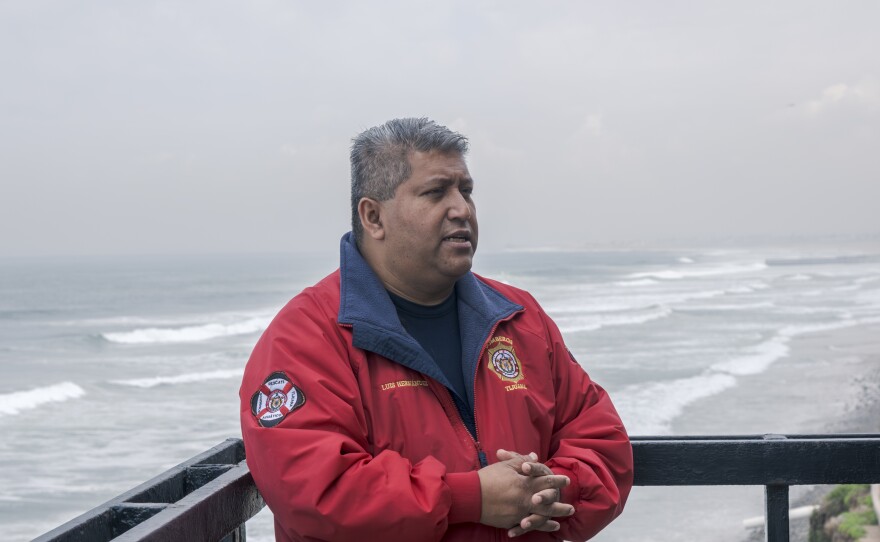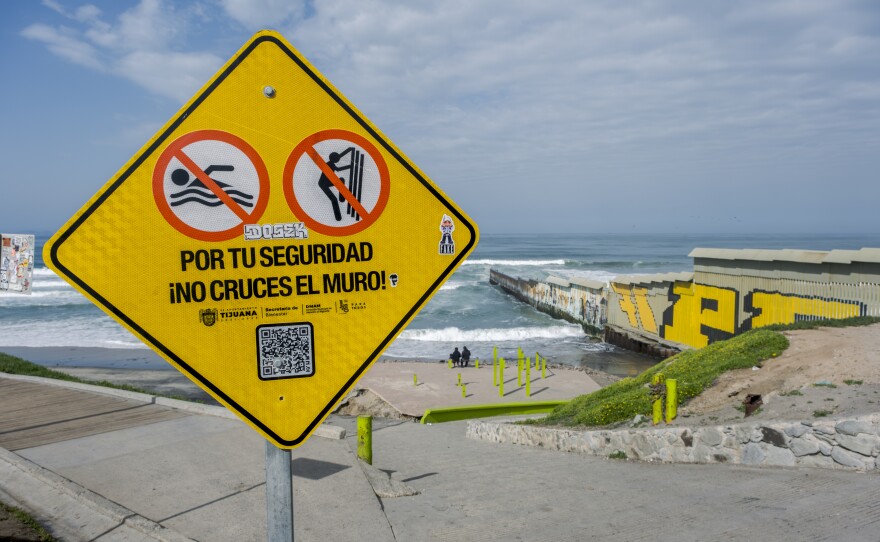Lifeguards aren’t supposed to see dead bodies. At least not on a regular basis.
But as more migrants try to swim around the United States-Mexico border, the region’s lifeguards are seeing more deaths than ever before.
“It weighs heavy on some people,” said Jason Lindquist, the Marine Safety Captain in Imperial Beach. “In the last two years, we’ve had way more fatalities than we’ve ever had.”
Lifeguards in Tijuana are also seeing a record number of migrant rescues and drownings. In 2020, they had just five rescues and only seven in 2021. Then, 59 in 2022 and 41 last year, according to Tijuana Capt. Luis Hernandez.
These figures are part of a trend: A rising migrant death toll along the southern border. More than 500 migrants died trying to enter the U.S. along the southern border last year. Migrants can die while trying to climb the border wall, while crossing the desert and by drowning in the ocean.
Hidden dangers
To the untrained eye, swimming around the border wall doesn’t seem all that dangerous. During low tide, the border wall ends about 200 feet into the Pacific Ocean.
But hidden dangers make the short swim dangerous to inexperienced swimmers, according to lifeguards.
The border wall’s metal posts create small whirlpools, which produce a permanent rip current that drags swimmers out into the ocean, Hernandez said.
“This isn’t like swimming in a pool,” Hernandez said. “There’s no ledge that you can just grab on to when you need to catch your breath.”
That strong current exhausts swimmers who often jump in the water with all their clothes on. Some migrants also swim while carrying heavy backpacks.
The wall’s metal posts are sharp and rusty. The U.S. side of the wall is covered in razor wire, Lindquist said.
“If the current pushes you against that fence, that’s a dangerous situation because you can’t get off it,” he said. “So the fence is dangerous, the current is dangerous, and the water is polluted every single day.”
In Tijuana, migrants either try to swim around the border or wrap their arms around each metal post while using shellfish growing near the bottom of the wall as makeshift steps. Both are dangerous, Hernandez said.
Migrants trying to swim against the current will tire out and get pulled out into the ocean. People stepping on mussels slip and cut themselves on the sharp shells.
“They’re like small knives,” Hernandez said. “We’ve rescued people with cuts on their chest, arms and legs.”
Those cuts can easily get infected in Tijuana’s notoriously polluted water, he added.

Cross-border cooperation
Rescuing people so close to the border presents a unique set of challenges.
From a legal standpoint, Tijuana lifeguards don’t want to be accused of helping people cross the border.
Whenever Tijuana lifeguards notice someone struggling near the border wall, they swim up to them and offer help — which is often refused.
“They shout, ‘No, no, let me go, I’m trying to get across,’” Hernandez said. “We can’t just stay there and help them along because we don’t want Border Patrol to misinterpret the situation.”
Sometimes, the current will pull Mexican lifeguards to the U.S. side of the border. Whenever that happens, Border Patrol agents will give them a ride back to Tijuana. Or, if Imperial Beach lifeguards are close by, they’ll use a jet ski to drop them off south of the border, Hernandez said.
Cross-border sewage pollution is another problem.
“Every time you go in the water, it’s dirty,” Lindquist said.
Imperial Beach lifeguards fill out an “exposure report” whenever they enter the water. Several lifeguards have reported stomach problems and headaches, Lindquist added.
Plus, the exposure to more deaths means more lifeguards are taking advantage of health benefits that give them access to therapists, he said.

Research catching up
New research published in the Journal of the American Medical Association confirms what lifeguards are seeing in the water.
UC San Diego professor Peter Lindholm and student Anna Lussier reviewed publicly available data on migrant deaths to find that drownings increased significantly after 2019 when the Trump Administration replaced an existing border wall with a taller one. In more recent years, the Biden Administration has continued to replace the border wall in San Diego.
There was only one drowning in the four years before the wall was replaced. In the four years after, there were 33 drownings. To be clear, Lindholm and Lussier noted their study does not establish causation. It does not directly attribute the drownings to the new wall.
Still, they believe this data is useful to first responders and health care professionals.
“It’s important for the lifeguards, emergency response systems and the UC health system to know if we have a lot of drowning-related accidents coming in,” Lindholm said.
Lussier is a Ph.D. and medical student in San Diego. She became interested in migrant injuries during a rotation in the trauma surgery unit at UC San Diego Health Center in Hillcrest, where she saw a lot of injuries from people who fell trying to climb over the border wall.
She began wondering whether migrants were trying to swim around the wall instead of climbing over it.
During a separate research project about occupational health exposure to ocean pollution, she asked San Diego lifeguards if they had noticed migrants trying to swim around the wall. The answer was a resounding yes, she said.
Although drownings are relatively new to San Diego, they are much more common in other parts of the world.
“Drowning during migration is one of the leading causes of death during migration around the world, especially in the Mediterranean area,” Lussier said. “But there hasn’t been a lot of scientific investigation into that.”
Lindholm and Lussier hope their work can help lay the framework for other researchers exploring this issue. They plan to analyze more data on drownings and rescues on both sides of the border.
“We are still missing a lot of information,” Lindholm said. “As a scientist, it’s interesting to see if we can find more data and contribute.”







